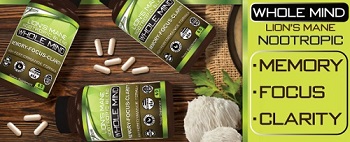How to Tell the Difference Between a Hook and Inciting Incident
Opening pages are notoriously hard to get right, especially in early drafts of your manuscript. I’ve read hundreds of opening chapters of novels in my work as a writing instructor and book coach and one of the most common issues I see comes down to a misunderstanding of the difference between two key parts of your opening: the hook and the inciting incident.
The hook and the inciting incident are both story beats that should be part of the setup for Part 1 (20-25%) of your novel. They’re crucial for hooking the reader and kicking off the major action of the plot, respectively, but unless you’re writing thriller or mystery, they should not be the same beat.
Larry Brooks writes that there are “…a handful of important things Part 1 needs to accomplish… it’s not to show the reader the big inciting incident in the first few pages—that’s called a hook, which is an important part of the setup” (Brooks, Larry. Story Engineering (p. 146)). Lisa Cron describes the opening hook of the story as the first tick in your ticking clock, the step that “trigger(s) your protagonist’s decision to take that first step out of her comfort zone” (Cron, Lisa. Story Genius (p. 140)).
So how can you set up exactly the right trigger, the right hook, for your story? Let’s dig in and find out!
What Is a Beat?
Ultimately, a beat is just an event that happens in the plot. All beats are important to your story, but some are more important than others. Beats like the hook, the inciting incident, the midpoint, and the climax are probably familiar to you, but if not, Resident Writing Coach Jami Gold has a solid introduction to story beats here.
How To Grab Readers, Hook, Line, And Sinker…
With all the emphasis on first pages, on hooking readers (and agents!) in the first chapter, the first page, even the first sentence, it can be tempting to start your story with a huge, action-packed event. But that often backfires for a couple of reasons.
The first is because often the “action-packed event” (particularly if this is a death or mortal peril) would mean more to the reader if they first cared about the main character. Nobody denies the tension in seeing poor Aunt Bertha fall off a cliff on page one, but we as readers care a lot more if we know why we should care about Aunt Bertha. If we learn in the hook, for example, that our heroine was raised by Aunt Bertha and feels like she’s her only support system in an otherwise hostile and lonely world just as she’s about to face a major life challenge, then Aunt Bertha’s death has story context. If you kill poor Aunt Bertha on page one instead, you’d have to rely on flashback to establish that bond between Aunt Bertha and our heroine, thus killing all the tension and momentum you created with the fall from the cliff. So in this particular example, we might want to show just exactly how tenuous the main character’s situation is, what challenges she’s facing in her ordinary world, which will then be irrevocably upended when she finds out that Aunt Bertha is gone a bit later (at the inciting incident).
A good hook should:
- Introduce the main character’s world in a tension-filled scene that demonstrates at least one of the challenges facing the character.
- Foreshadow the main antagonistic force and main plot that is coming.
- Establish the voice of the main character.
- Create sympathy for the main character.
In short, the hook establishes the character’s ordinary world in an extraordinary way so that the reader takes the bait…hook, line, and sinker.
With The Context Established, Enter the Inciting Incident
Once your readers are hooked, the next major story beat is the Inciting Incident. Lisa Cron describes the inciting incident as follows: “…what unavoidable external change will catapult my protagonist into the fray, triggering her internal battle? In other words, what threshold is my protagonist standing on the brink of, whether she knows it or not?” (Cron, Lisa. Story Genius, (p. 129)). Once your main character crosses that threshold, they’ve passed a point of no return and the main plot of the story is inevitably, irrevocably set in motion.
A solid inciting incident should:
- Be a moment that, given the context established in the hook and opening of the story, upends the character’s life.
- Set the larger plot in motion.
- Introduce the obstacles the character will face and a sense of the stakes if they fail.
If you’ve done a good job of establishing the character’s ordinary world in the hook at the opening book and the intervening chapters leading to the inciting incident, the reader will instinctively know just exactly how the inciting incident is going to shake up the character’s life.
Some Real-World Examples
OK, I know this is a lot, so let’s look at some examples (there will be some mild spoilers here, so read at your own risk!):
Yellowface by RF Kuang starts with a great hook—the death of the main character’s sometimes friend, sometimes professional rival, author Athena Liu. The tension is high here not just because Athena chokes to death in front of June, the main character, but because before that moment, June’s professional jealousy is clearly on display, which leads to the inciting incident—June stealing Athena’s unpublished manuscript and passing it off as her own. If RF Kuang had tried to start with the inciting incident—the stealing of the manuscript—she either would have had to hugely dip back into backstory to give the reader context or the reader just wouldn’t have known enough about June’s motivations, her sense of the injustice of her own failure to launch as an author, and all the other details of her character that bring the story to life. This is not a book where the reader has a great deal of sympathy for the main character, but at least we understand her motivations enough to suspect that she’s about to blow up her life in dramatic fashion and we’re hooked enough to go along for the ride to watch it happen.
In Helen Huang’s The Kiss Quotient, the story opens with main character Stella’s mother declaring that she’s ready to have grandchildren. The announcement begins a panic spiral that does an excellent job of character development while introducing us to one of the big impediments to Stella being able to meet her mother’s expectations: she hates the idea of having sex. The voice of this opening scene is already great at piquing the reader’s interest, but the next scene really sets the hook when we meet Philip, the colleague her parents suggest she date, and realize that he’s a terrible match for Stella. Back against the wall, Stella does what any self-respecting data scientist would: she decides to hire a male escort to teach her how to be good at sex (inciting incident) and shenanigans ensue for the rest of this hilarious and sexy gender-flipped Pretty Woman retelling.
In Six of Crows by Leigh Bardugo, the hook is a prologue that establishes the magic system of her story world. But it’s not an info-dump. Instead, it’s a vivid scene of those in power testing a drug on a prisoner with magical powers. The drug enhances her magical power to the point that she’s able to control her captors with disastrous results for these obviously bad men. Yet, the implications are clear—whoever controls this drug has access to an immense and dangerous power. This one’s a little bit of a rule breaker because we don’t start with one of the main POV characters that make up this ensemble cast, and yet it’s a brilliant hook because of the clear life or death stakes of this magic and the drug that amplifies it. So when we meet the main characters in the next several chapters and realize that several of them are also magical, the stakes are immediately raised. And when we find out they’re planning a heist that might disrupt the evil powers that be (inciting incident), we are completely invested in the characters and the world.
Now It’s Your Turn…
Can you identify the hook moment and the inciting incident in your story? If not, perhaps look at a few examples from published stories in your genre/age category and then see if you can’t craft something similar for your own. Getting that hook right ensure you’re starting your story in the right place, a place that will grab readers and make sure they keep turning pages.
If you’d like a deeper dive into what makes first pages work, check out A Mother Lode of First Pages Resources and Writers Helping Writers’ First Pages Checklist.
Good news! Julie Artz will be the guest editor for our December 18 contest where winners will receive feedback on a scene up to 750 words that includes their chapter one hook.
The post How to Tell the Difference Between a Hook and Inciting Incident appeared first on WRITERS HELPING WRITERS®.
The Bookshelf Muse is a hub for writers, educators and anyone with a love for the written word. Featuring Thesaurus Collections that encourage stronger descriptive skills, this award-winning blog will help writers hone their craft and take their writing to the next level.
Source: https://writershelpingwriters.net/2025/10/how-to-tell-the-difference-between-a-hook-and-inciting-incident/
Anyone can join.
Anyone can contribute.
Anyone can become informed about their world.
"United We Stand" Click Here To Create Your Personal Citizen Journalist Account Today, Be Sure To Invite Your Friends.
Before It’s News® is a community of individuals who report on what’s going on around them, from all around the world. Anyone can join. Anyone can contribute. Anyone can become informed about their world. "United We Stand" Click Here To Create Your Personal Citizen Journalist Account Today, Be Sure To Invite Your Friends.
LION'S MANE PRODUCT
Try Our Lion’s Mane WHOLE MIND Nootropic Blend 60 Capsules
Mushrooms are having a moment. One fabulous fungus in particular, lion’s mane, may help improve memory, depression and anxiety symptoms. They are also an excellent source of nutrients that show promise as a therapy for dementia, and other neurodegenerative diseases. If you’re living with anxiety or depression, you may be curious about all the therapy options out there — including the natural ones.Our Lion’s Mane WHOLE MIND Nootropic Blend has been formulated to utilize the potency of Lion’s mane but also include the benefits of four other Highly Beneficial Mushrooms. Synergistically, they work together to Build your health through improving cognitive function and immunity regardless of your age. Our Nootropic not only improves your Cognitive Function and Activates your Immune System, but it benefits growth of Essential Gut Flora, further enhancing your Vitality.
Our Formula includes: Lion’s Mane Mushrooms which Increase Brain Power through nerve growth, lessen anxiety, reduce depression, and improve concentration. Its an excellent adaptogen, promotes sleep and improves immunity. Shiitake Mushrooms which Fight cancer cells and infectious disease, boost the immune system, promotes brain function, and serves as a source of B vitamins. Maitake Mushrooms which regulate blood sugar levels of diabetics, reduce hypertension and boosts the immune system. Reishi Mushrooms which Fight inflammation, liver disease, fatigue, tumor growth and cancer. They Improve skin disorders and soothes digestive problems, stomach ulcers and leaky gut syndrome. Chaga Mushrooms which have anti-aging effects, boost immune function, improve stamina and athletic performance, even act as a natural aphrodisiac, fighting diabetes and improving liver function. Try Our Lion’s Mane WHOLE MIND Nootropic Blend 60 Capsules Today. Be 100% Satisfied or Receive a Full Money Back Guarantee. Order Yours Today by Following This Link.






